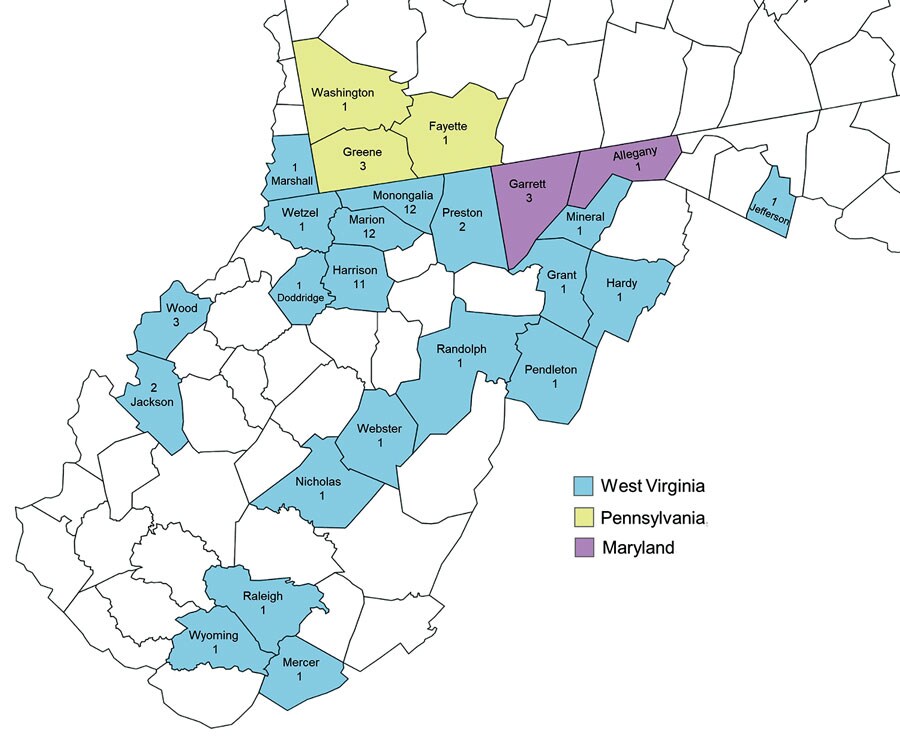Volume 29, Number 5—May 2023
CME ACTIVITY - Research
Emergence of Erythromycin-Resistant Invasive Group A Streptococcus, West Virginia, USA, 2020–2021
Figure 1

Figure 1. Geographic distribution of patients with invasive group A Streptococcus infection in West Virginia, USA, 2020–2021. A total of 56 iGAS isolates were collected from patients in 20 counties. Residence status for 9 patients was undocumented, and 9 patients were listed as homeless; in those cases, we used the county of residence for the billing address. Nine isolates were from neighboring counties in Pennsylvania and Maryland. The predominant emm type in the 3 West Virginia counties containing the most isolates was emm92 (10 isolates in Harrison County, 6 in Marion County, and 8 in Monongalia County) (Appendix Table 3).
1These senior authors contributed equally to this article.
Page created: March 06, 2023
Page updated: April 14, 2023
Page reviewed: April 14, 2023
The conclusions, findings, and opinions expressed by authors contributing to this journal do not necessarily reflect the official position of the U.S. Department of Health and Human Services, the Public Health Service, the Centers for Disease Control and Prevention, or the authors' affiliated institutions. Use of trade names is for identification only and does not imply endorsement by any of the groups named above.